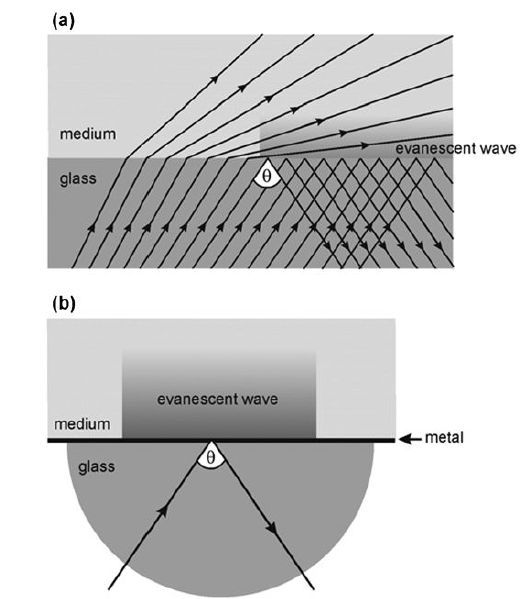

النبات

مواضيع عامة في علم النبات

الجذور - السيقان - الأوراق

النباتات الوعائية واللاوعائية

البذور (مغطاة البذور - عاريات البذور)

الطحالب

النباتات الطبية


الحيوان

مواضيع عامة في علم الحيوان

علم التشريح

التنوع الإحيائي

البايلوجيا الخلوية


الأحياء المجهرية

البكتيريا

الفطريات

الطفيليات

الفايروسات


علم الأمراض

الاورام

الامراض الوراثية

الامراض المناعية

الامراض المدارية

اضطرابات الدورة الدموية

مواضيع عامة في علم الامراض

الحشرات


التقانة الإحيائية

مواضيع عامة في التقانة الإحيائية


التقنية الحيوية المكروبية

التقنية الحيوية والميكروبات

الفعاليات الحيوية

وراثة الاحياء المجهرية

تصنيف الاحياء المجهرية

الاحياء المجهرية في الطبيعة

أيض الاجهاد

التقنية الحيوية والبيئة

التقنية الحيوية والطب

التقنية الحيوية والزراعة

التقنية الحيوية والصناعة

التقنية الحيوية والطاقة

البحار والطحالب الصغيرة

عزل البروتين

هندسة الجينات


التقنية الحياتية النانوية

مفاهيم التقنية الحيوية النانوية

التراكيب النانوية والمجاهر المستخدمة في رؤيتها

تصنيع وتخليق المواد النانوية

تطبيقات التقنية النانوية والحيوية النانوية

الرقائق والمتحسسات الحيوية

المصفوفات المجهرية وحاسوب الدنا

اللقاحات

البيئة والتلوث


علم الأجنة

اعضاء التكاثر وتشكل الاعراس

الاخصاب

التشطر

العصيبة وتشكل الجسيدات

تشكل اللواحق الجنينية

تكون المعيدة وظهور الطبقات الجنينية

مقدمة لعلم الاجنة


الأحياء الجزيئي

مواضيع عامة في الاحياء الجزيئي


علم وظائف الأعضاء


الغدد

مواضيع عامة في الغدد

الغدد الصم و هرموناتها

الجسم تحت السريري

الغدة النخامية

الغدة الكظرية

الغدة التناسلية

الغدة الدرقية والجار الدرقية

الغدة البنكرياسية

الغدة الصنوبرية

مواضيع عامة في علم وظائف الاعضاء

الخلية الحيوانية

الجهاز العصبي

أعضاء الحس

الجهاز العضلي

السوائل الجسمية

الجهاز الدوري والليمف

الجهاز التنفسي

الجهاز الهضمي

الجهاز البولي


المضادات الميكروبية

مواضيع عامة في المضادات الميكروبية

مضادات البكتيريا

مضادات الفطريات

مضادات الطفيليات

مضادات الفايروسات

علم الخلية

الوراثة

الأحياء العامة

المناعة

التحليلات المرضية

الكيمياء الحيوية

مواضيع متنوعة أخرى

الانزيمات
Evanescent Wave Biosensors
المؤلف:
John M Walker and Ralph Rapley
المصدر:
Molecular Biology and Biotechnology 5th Edition
الجزء والصفحة:
21-1-2021
2408
Evanescent Wave Biosensors
A light beam will be totally reflected when it strikes an interface between two transparent media, from the side with the higher refractive index, at angles of incidence (θ) greater than the critical angle (Figure 1.a).
This is the principle that allows transparent fibres to be used as optical waveguides. At the point of reflection an electromagnetic field is induced which penetrates into the medium with the lower refractive index, usually air or water. This field is called the evanescent wave and it rapidly decays exponentially with the penetration distance and generally has effectively disappeared within a few hundred nanometres. The exact depth of penetration depends on the refractive indices and the wavelength of the light and can be controlled by the angle of incidence. The evanescent wave may interact with the medium and the resultant electromagnetic field may be coupled back into the higher refractive index medium (usually glass) by essentially the reverse process. This gives rise to changes in the light emitted down the waveguide. Thus, it can be used to detect changes occurring in the liquid medium. The necessary surface interactions impose a limitation on the sensitivity of such devices at about 10 pgmm-2 and the requirement to limit non-specific absorption.

Figure . Production of (a) an evanescent wave and (b) surface plasmon resonance. At acute enough angles of incidence the light is totally internally reflected at the glass surface. In (a) an evanescent wave extends from this surface into the air or water medium. This process is amplified in (b) by the presence of the thin metal film.
Various effects, dependent on the biological sensing processes, can be determined, including changes in absorption, optical activity, fluorescence and luminescence. Because of the small degree of penetration, this system is particularly sensitive to biological processes in the immediate vicinity of the surface and independent of any bulk processes or changes.
Due to the small pathlength through the solution, it can even be used for the continuous monitoring of apparently opaque solutions. This biosensor configuration is particularly suitable for immunoassays as there is no need to separate bulk components since the wave only penetrates as far as the antibody–antigen complex. Surface-bound fluorophores may be excited by the evanescent wave and the excited light output detected after it is coupled back into the fibre (Figure 2.).

Figure 2. The principle behind evanescent wave immunosensor. The light output is reduced by absorption within the evanescent wave.
Sensors can be fabricated which measure oxidase substrates using the principle of quenching of fluorescence by molecular oxygen as described earlier. Another advantage of only sensing a surface reaction less than 1 mm thick is that the volume of analyte needed may be very small indeed, that is, less than 1 nl using suitable fluid transfer microfluidics.
Protein A, an important immunoglobulin-binding protein from Staphylococcus aureus, has been determined by this method using a plastic optical fibre coated with its antibody. Detection was by the fluorescence of a fluorescein-bound anti-protein A immunoglobulin which was subsequently bound, sandwiching the protein A.
 الاكثر قراءة في مواضيع عامة في التقانة الإحيائية
الاكثر قراءة في مواضيع عامة في التقانة الإحيائية
 اخر الاخبار
اخر الاخبار
اخبار العتبة العباسية المقدسة

الآخبار الصحية















 قسم الشؤون الفكرية يصدر كتاباً يوثق تاريخ السدانة في العتبة العباسية المقدسة
قسم الشؤون الفكرية يصدر كتاباً يوثق تاريخ السدانة في العتبة العباسية المقدسة "المهمة".. إصدار قصصي يوثّق القصص الفائزة في مسابقة فتوى الدفاع المقدسة للقصة القصيرة
"المهمة".. إصدار قصصي يوثّق القصص الفائزة في مسابقة فتوى الدفاع المقدسة للقصة القصيرة (نوافذ).. إصدار أدبي يوثق القصص الفائزة في مسابقة الإمام العسكري (عليه السلام)
(نوافذ).. إصدار أدبي يوثق القصص الفائزة في مسابقة الإمام العسكري (عليه السلام)


















